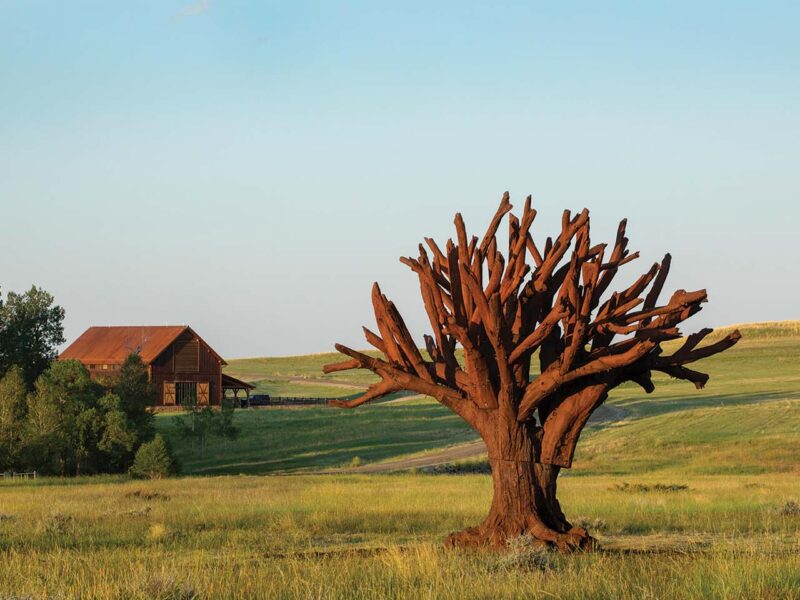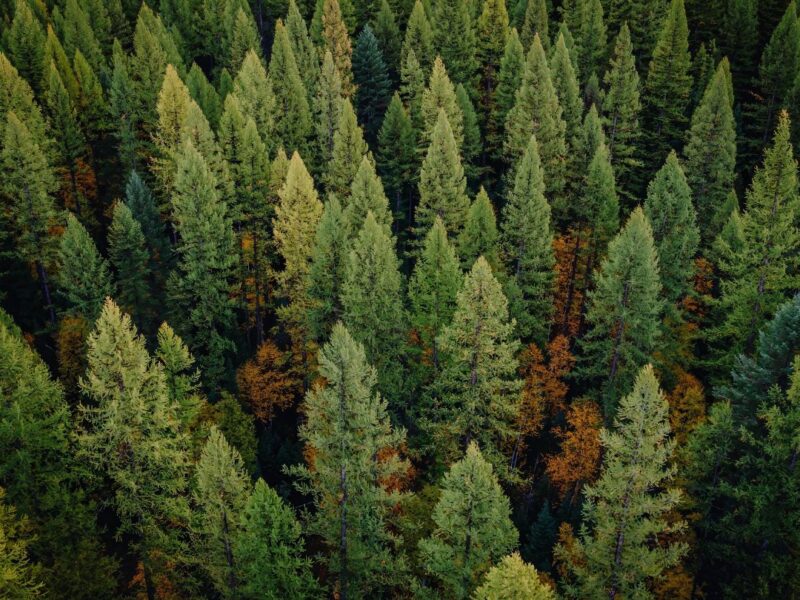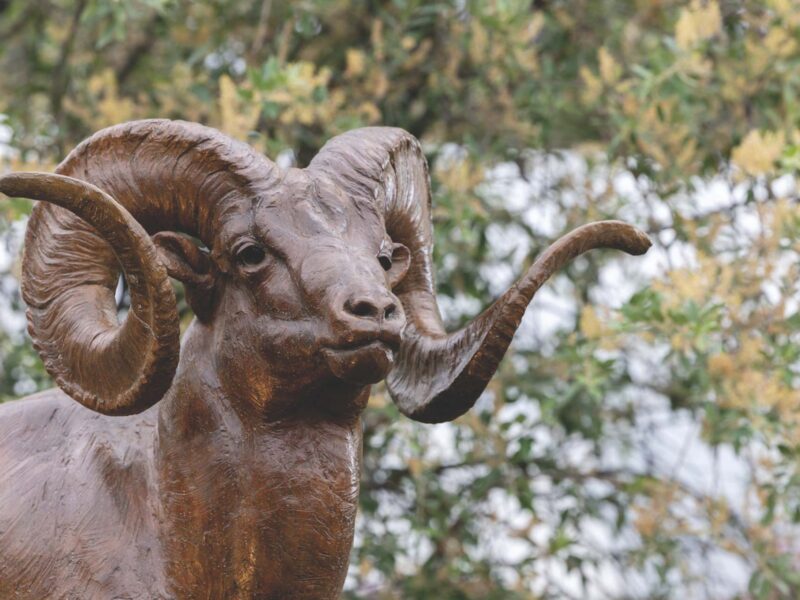Can a fence that allows elk to pass stop the disease they carry?
Brucellosis is a highly infectious bacterial disease that most Americans are fortunate to have never heard of. To keep it that way, we need ranchers like Mick McCarty, who are willing to work closely with public agencies, and get creative with the tools in their toolbox.
Brucellosis infects more than 500,000 people worldwide each year. Also known as undulant fever, it can cause chronic fever and joint and muscle pain, as well as health risks during pregnancy. Humans get it from eating or handling infected animal products, like unpasteurized milk.
In the U.S., however, thanks to aggressive quarantine practices and mandatory dairy pasteurization laws there were just 115 confirmed cases in 2010 (the last year for which the CDC has published nationwide infection data). Despite practically eradicating the disease from domestic livestock in the U.S., wild animals like elk and bison provide a reservoir of the bacteria we can’t eradicate completely. Therefore, there remains a risk of human infection, especially for groups like hunters, ranchers, wildlife managers and meatpackers who are more likely to contact contaminated animal products.
Conservation groups, sportsmen’s groups, agencies and others want to see these herds conserved, but conserving them brings costs. And so a big question is “how do we share those costs?”
Arthur Middleton
Ranchers who sustain the landscape bear the costs
Yellowstone’s Cody elk herd makes one of “the longest migrations of elk we know about in the lower 48 states,” according to Arthur Middleton, an assistant professor of wildlife management and policy at UC Berkeley and trustee at the Buffalo Bill Center of the West in Cody, Wyoming, who has studied them extensively for nearly two decades. The elk do not distinguish between public and private land.
The roughly 6,000 elk spend their summers in Yellowstone National Park but winter in less snowy climes outside of the park. Private ranches near Cody, as in the rest of the Greater Yellowstone Ecosystem (GYE), provide critical habitat to support these massive migrations. In the communities surrounding Yellowstone, these ranches are a significant bulwark against the growing threat of subdivision: development puts more vehicles, pavement, people, and problems between wildlife and their winter range. Meanwhile, the risk of brucellosis infection has risen as predators, development, and a host of other factors combine to pack more elk closer together. Prevalence of brucellosis in the Cody elk herd, for instance, has increased from less than 5% to nearly 20% over the past two decades.
Because of this growing disease risk, those raising domestic livestock in the Greater Yellowstone Ecosystem are ranching within what state and federal agencies have labeled the Designated Surveillance Area (DSA). Their livestock are tested regularly for brucellosis, and a single confirmed case requires they put their entire herd under costly quarantine.
“If you get one cow infected, your entire herd is quarantined, and you lose substantial, substantial, marketing opportunities,” remarks rancher Mick McCarty, of the Quarter Circle Eleven ranch between Cody and Meeteetse.
“Conservation groups, sportsmen’s groups, agencies and others want to see these herds conserved, but conserving them brings costs. And so a big question is ‘how do we share those costs?’” says Middleton.
A more porous fence to stop disease
“When I bought this place [20 years ago] you’d see a handful of elk. Now we have thousands,” says McCarty. “The increased elk numbers on this ranch has something to do with predators, and the reintroduction of wolves and the increase of bears.” With more and more predators increasingly venturing further and further from the park boundaries, McCarty’s supposition is supported by research.
As grizzlies come out of hibernation on the Yellowstone Plateau in the spring, they drive pregnant elk and yearlings down onto the private lands in the Bighorn Basin. As McCarty puts it, “elk calves, well, they are like candy to a grizzly bear.” That time of year is also riskiest for brucellosis transmission, as cows coming into contact (i.e. smelling) elk afterbirth or aborted fetuses are the most common means of infection. “They’re driving them down here during the brucellosis transfer period,” says McCarty.
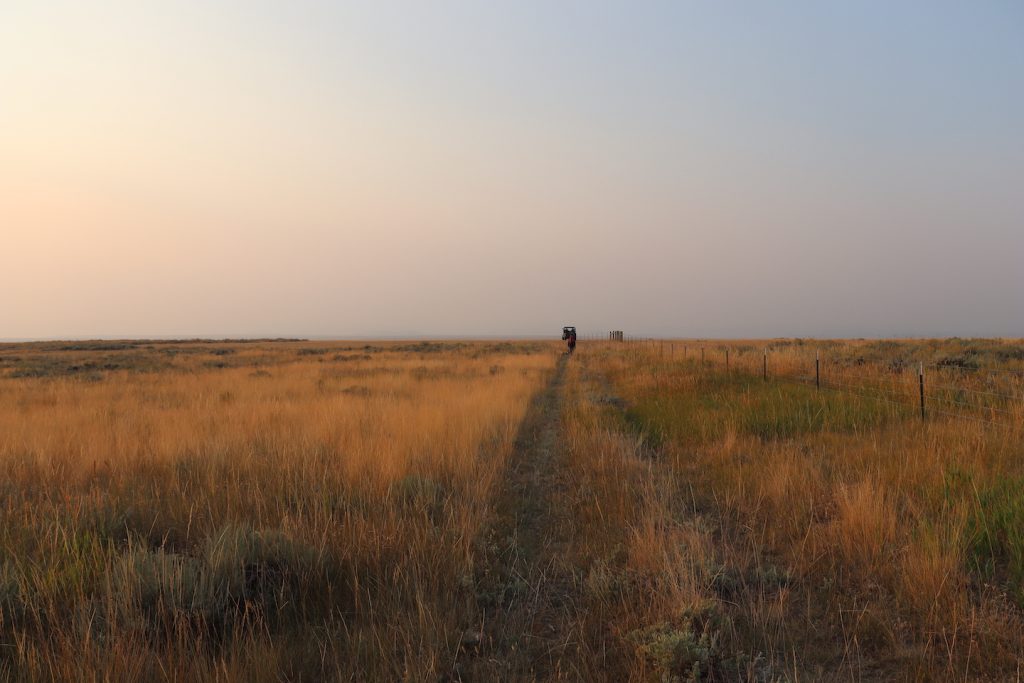
McCarty, working with Wyoming Game & Fish Department disease biologist Eric Maichak, turned to hazing the elk away from his cow herd during that time of year. McCarty, members of his family, his employees, and Maichak take turns driving miles of bumpy two-track in below-freezing temperatures to haze the elk, temporarily, off McCarty’s ranch and onto neighboring properties (where, fortunately, cattle are not grazed at that time of year). “Elk don’t trust humans out here, so it doesn’t take much to get them moving,” says Maichak. “You can move several hundred head of elk with just one person, just slowly approaching.”
The problem was young elk calves couldn’t always make it over the fence between McCarty’s ranch and the neighboring parcels. They had filtered onto the Quarter Circle Eleven through open gates, downed fence or under a wildlife-friendly fence miles away, but now they wanted to get out in a hurry, in a specific direction, and there the existing fence made it a challenge. “The calves couldn’t get through. The cows would jump the fence and run, and the calves would all be here,” says McCarty. “Then they’d all just come back because they weren’t going to leave their calves, and they’d end up just tearing down the fence.”
Maichak says that after watching this behavior for a few years, he had an unusual idea: what if they used wildlife-friendly fencing to make it easier to get elk out when they wanted them out? The idea was brand new “as far as we know,” says Maichak, but thanks to funding from the innovative Regional Conservation Partnership Program (RCPP) of USDA, The Nature Conservancy was able to distribute funding for the project, while USDA’s Natural Resources Conservation Service (NRCS) provided key technical support.
“These guys [Rory Karhu with NRCS and Steffen Cornell with the Meeteetse Conservation District, along with Maichak] just took the ball and did it,” says McCarty. In other words, McCarty trusted his public agency partners, and they repaid his trust with nearly 11 miles of brand new fence that is already a win for the Quarter Circle Eleven ranch, and will likely be a big win for wildlife
Not settling, but setting out to demonstrate
Steffen Cornell, a biologist with the Meeteetse Conservation District, is a self-professed “numbers-nerd.” As the funds for the Quarter Circle Eleven fence project fell into place, he worked to be sure they could quantify its effects on wildlife. Another bonus for technophile Cornell: this would require deploying a lot of camera traps.
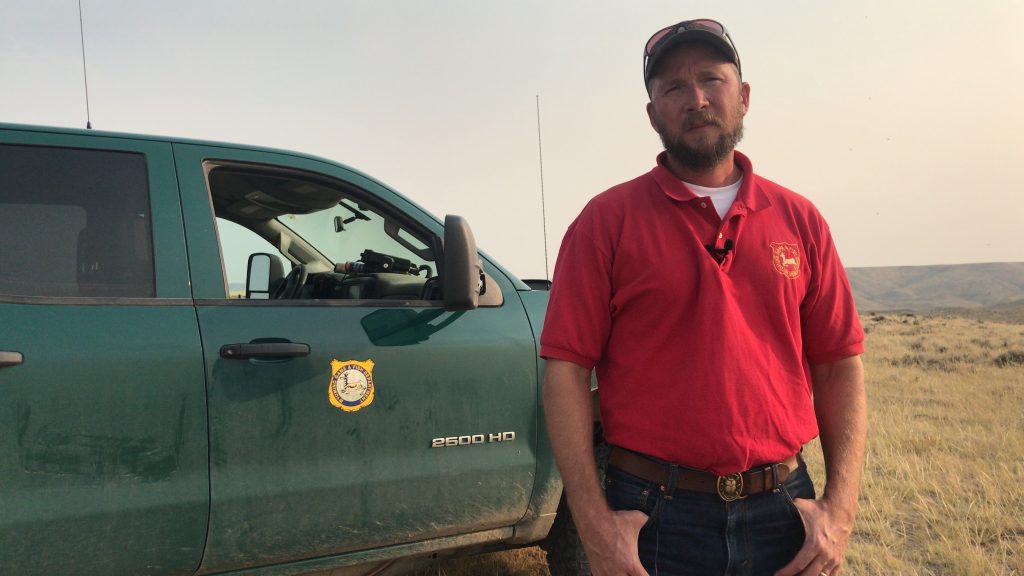
So, early in 2020, Cornell set up a dozen camera traps at sections of the existing fence to document how wildlife were experiencing it. And just as McCarty and Maichak had observed, in many places, elk calves simply could not surmount the obstacle the old woven wire sheep fencing presented. The video showed that nearly 60% of all elk attempts to cross the fence were turned around. Analyzing the video from camera traps also showed just how far other animals, especially pronghorn antelope, were willing to go to get around older fencing. The evidence quantified McCarty’s lived experience.
Now that the fence has been replaced, the camera traps are being reinstalled in the same locations to document any changes that occur. Maichak, Cornell, and McCarty are all optimistic that the study will confirm their intuition: if the elk calves can move on more easily when the herd is hazed, they’ll stay away from the cattle longer during the brucellosis transfer period. This will benefit both McCarty and the state of Wyoming immediately: fewer man-hours needed to haze elk next season and a lower risk of brucellosis spilling over from elk to cattle. And it will ultimately benefit all of us who care about the health of these migrations.
As Middleton says, “There simply isn’t a way to think about the conservation of these national and state resources without partnership between private landowners and public agencies and the public at large. That’s how conservation works in this part of the West.”


